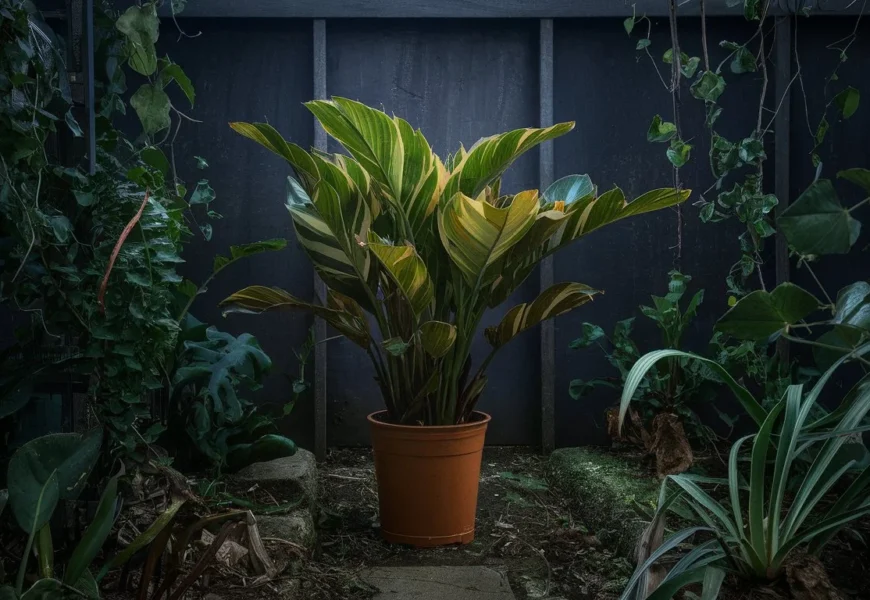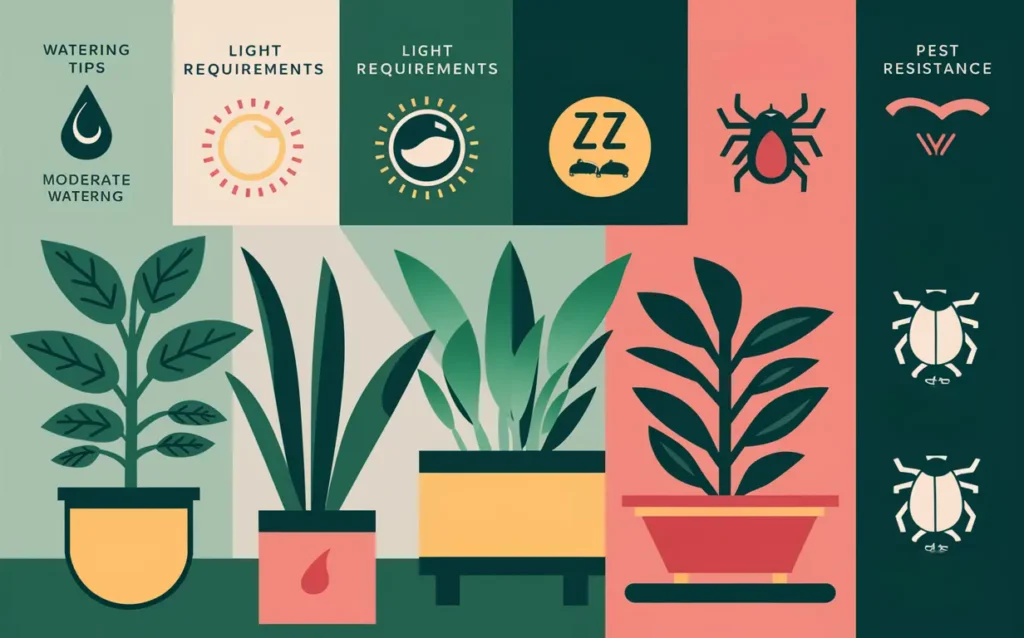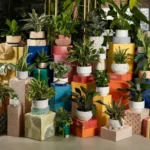In the realm of indoor gardening, there’s a shining star that stands out for its unparalleled ease of care: the ZZ plant. Renowned for its resilience and low-maintenance nature, ZZ plants are beloved by beginners and seasoned plant enthusiasts alike.
Let’s explore why these botanical beauties are hailed as the ultimate “set-it-and-forget-it” houseplants.
Why ZZ Plants?
ZZ plants (Zamioculcas zamiifolia) have gained widespread popularity for their ability to thrive with minimal care.
Unlike some high-maintenance houseplants, ZZ plants require little attention to flourish, making them a favorite among busy individuals and those with limited gardening experience.
1. Resilience to Neglect and Various Environmental Conditions
ZZ plants are true survivors, capable of enduring periods of neglect and adapting to various environmental conditions.
Their remarkable resilience to neglect and ability to thrive even in less-than-ideal conditions make them an excellent choice for those with busy schedules or inexperienced plant parents.
2. Drought Tolerance
One of the key factors contributing to the ZZ plant’s low-maintenance nature is its exceptional drought tolerance.
As discussed in “Creating a Beautiful Indoor Jungle with Self-Watering Planters”, ZZ plants have adapted to survive in arid environments by storing water in their underground rhizomes.
This built-in water reservoir allows ZZ plants to withstand extended periods of drought without wilting or suffering from water stress.
3.Low-Light Adaptability
Another standout feature of ZZ plants is their ability to thrive in low-light conditions. Unlike many other houseplants that require ample sunlight to thrive, ZZ plants can thrive in rooms with minimal natural light.
As highlighted in “Sunshine Solutions: Choosing the Best Blinds for Thriving Houseplants”, their tolerance to dimly lit spaces makes them an excellent choice for offices, bathrooms, or any room with limited exposure to sunlight.
Tips for Watering ZZ Plants Sparingly
Watering ZZ plants sparingly is key to their health and vitality. Follow these practical tips to ensure your ZZ plant thrives with minimal moisture:
- Monitor Soil Moisture: Check the moisture level of the soil regularly by inserting your finger into the soil up to the first knuckle. If the soil feels dry to the touch, it’s time to water your ZZ plant.
- Water Infrequently: ZZ plants have low water requirements and prefer to dry out between waterings. Aim to water your ZZ plant every 2-3 weeks during the growing season, and even less frequently during the winter months when growth slows down.
- Use Well-Draining Soil: Plant your ZZ plant in well-draining soil to prevent water from pooling around the roots. This helps avoid the risk of root rot, a common issue caused by overwatering.
- Water from the Base: When watering your ZZ plant, pour water directly into the soil at the base of the plant, avoiding wetting the foliage. This helps prevent fungal diseases and keeps the leaves dry and healthy.
- Allow Excess Water to Drain: After watering, allow any excess water to drain away freely from the pot. Empty the saucer or tray beneath the pot to prevent water from sitting around the roots, which can lead to waterlogged soil and root rot.
- Adjust Watering Frequency: Adjust your watering frequency based on environmental factors such as temperature, humidity, and light levels. During hot weather or in dry indoor environments, your ZZ plant may require more frequent watering to prevent dehydration.
By following these simple watering tips, you can ensure your ZZ plant receives just the right amount of moisture to thrive without the risk of overwatering.
For more insights on caring for your indoor plants, check out my blog post on “How Houseplants Become Your Natural Stress Busters”.
ZZ Plant’s Ability to Thrive in Low-Light Conditions
One of the standout features of ZZ plants is their remarkable ability to thrive in low-light environments. Here are some key points to understand about their adaptability to dimly lit spaces:
- Tolerance to Low Light: ZZ plants are highly tolerant to low light conditions, making them an ideal choice for rooms with minimal natural sunlight. Whether you have a windowless office or a dimly lit corner in your home, ZZ plants will continue to grow and thrive.
- Indoor Lighting Solutions: If you’re concerned about providing enough light for your ZZ plant, consider supplementing natural light with artificial lighting options. LED grow lights or fluorescent bulbs can mimic natural sunlight and provide the additional light needed for optimal growth.
- Placement Tips: When positioning your ZZ plant in a low-light environment, place it near a window where it can still receive indirect sunlight, if possible. Avoid placing it in areas with direct sunlight, as this can scorch the leaves and cause damage.
- Versatility in Indoor Spaces: ZZ plants’ ability to thrive in low-light conditions makes them versatile indoor plants that can be placed virtually anywhere in your home or office. From bathrooms and hallways to bedrooms and living rooms, ZZ plants add a touch of greenery to any space.
- Low-Light Plant Companions: Consider pairing your ZZ plant with other low-light-loving houseplants, such as snake plants or pothos, to create a lush indoor jungle in areas with limited sunlight.
By understanding and harnessing the ZZ plant’s natural ability to thrive in low-light conditions, you can confidently incorporate these resilient plants into your indoor spaces with ease.
For more tips on caring for low-light houseplants, check out my blog post on “Breathe Easy: Beautify Your Living Room with Top Plants for a Healthy, Happy Home”.
ZZ Plants Are Resistance to Pests and Diseases
ZZ plants are not only low-maintenance but also relatively resistant to pests and diseases. Here’s why ZZ plants are a hassle-free choice when it comes to plant care:
- Pest-Free Environment: ZZ plants are rarely affected by common houseplant pests such as spider mites, mealybugs, or aphids. Their sturdy leaves and underground rhizomes act as natural deterrents, making them less susceptible to pest infestations.
- Disease Resistance: In addition to pests, ZZ plants are also resistant to common plant diseases such as powdery mildew or fungal infections. Their robust nature and ability to store water in their rhizomes help prevent moisture-related diseases like root rot.
- Pet-Friendly: ZZ plants are not only resilient to pests and diseases but also safe for pets. Their foliage is non-toxic to cats and dogs, making them a pet-friendly choice for households with furry friends. However, it’s still essential to keep ZZ plants out of reach of curious pets to prevent accidental ingestion.
- Low-Maintenance Care: The minimal care requirements of ZZ plants, combined with their resistance to pests and diseases, make them an excellent choice for busy individuals or those with limited gardening experience. With ZZ plants, you can enjoy beautiful, healthy foliage without the need for constant monitoring or pest management.
By choosing ZZ plants for your indoor garden, you can enjoy the peace of mind that comes with knowing your plants are resistant to pests and diseases, allowing you to focus on enjoying their beauty and benefits.
For more tips on creating a harmonious environment for pets and plants, check out my blog post on “Pets & Plants: Happy Home Hacks for You & Your Dog”.
ZZ Plants are Perfect for Beginners or Those with Busy Lifestyles
ZZ plants are the ultimate choice for anyone seeking a low-maintenance, hassle-free houseplant. Here’s why ZZ plants are perfect for beginners or those with busy lifestyles:
- Minimal Care Requirements: ZZ plants require minimal care and attention, making them an excellent choice for beginners or anyone with a hectic schedule. With their resilience to neglect and ability to thrive in various environmental conditions, ZZ plants offer a stress-free gardening experience.
- Ideal for Busy Lifestyles: If you’re constantly on the go or travel frequently, ZZ plants are the perfect companion for your busy lifestyle. Their drought tolerance and low water requirements mean you can go weeks without watering them, without worrying about their well-being.
- Versatility in Indoor Spaces: Whether you’re decorating a small apartment, office cubicle, or spacious living room, ZZ plants fit seamlessly into any indoor environment. Their compact size and ability to thrive in low-light conditions make them versatile additions to any space.
- Pet-Friendly and Safe: ZZ plants are safe for pets, making them an excellent choice for households with furry friends. Their non-toxic foliage ensures your pets can coexist peacefully with your plants without any worries.
- Stress-Free Gardening: With ZZ plants, you can enjoy the benefits of indoor gardening without the stress and hassle of high-maintenance plants. Simply place your ZZ plant in a suitable spot, water sparingly, and watch it thrive effortlessly.
By incorporating ZZ plants into your indoor spaces, you can enjoy the beauty of lush greenery without the need for constant care and attention.
For more tips on creating a harmonious indoor environment with houseplants, check out my blog post on “How Houseplants Become Your Natural Stress Busters”.
Frequently Asked Questions (FAQs)
Are ZZ plants suitable for beginners?
Yes, ZZ plants are perfect for beginners due to their low-maintenance nature and resilience to neglect.
How often should I water my ZZ plant?
Water your ZZ plant sparingly, allowing the soil to dry out between waterings. Aim to water every 2-3 weeks during the growing season and less frequently in winter.
Can ZZ plants survive in low-light conditions?
Absolutely! ZZ plants thrive in low-light environments, making them ideal for rooms with minimal natural sunlight.
Are ZZ plants resistant to pests and diseases?
Yes, ZZ plants are relatively resistant to common houseplant pests and diseases. Their sturdy leaves and rhizomes deter pests, and they are rarely affected by diseases like root rot.
Are ZZ plants safe for pets?
Yes, ZZ plants are pet-friendly and safe for cats and dogs. Their foliage is non-toxic, but it’s still essential to keep them out of reach of curious pets.
How do I know if my ZZ plant is getting enough light?
If your ZZ plant is thriving and producing new growth, it’s likely getting enough light. If it starts to look leggy or pale, consider moving it to a brighter location.
Can ZZ plants be placed outdoors?
While ZZ plants are primarily indoor plants, they can tolerate outdoor conditions in mild climates. However, avoid exposing them to direct sunlight or extreme temperatures.
How big do ZZ plants grow?
ZZ plants typically grow to a height of 2-3 feet indoors, but they can grow larger with proper care and favorable conditions.
Do ZZ plants require fertilizer?
ZZ plants are not heavy feeders and can thrive without regular fertilization. However, you can use a balanced houseplant fertilizer diluted to half strength during the growing season if desired.
How do I propagate ZZ plants?
ZZ plants can be propagated by dividing rhizomes or by leaf cuttings. For detailed instructions, refer to our blog post on “Breathe New Life into Your Houseplants: Repotting Done Right”.








